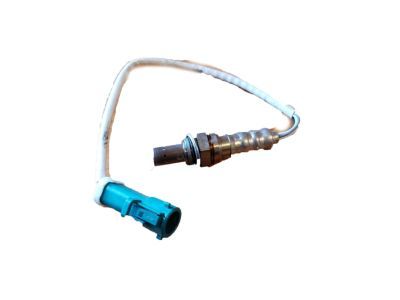

My Garage
My Account
Cart
Genuine Ford Excursion Oxygen Sensors
Oxygen O2 Sensor- Select Vehicle by Model
- Select Vehicle by VIN
Select Vehicle by Model
orMake
Model
Year
Select Vehicle by VIN
For the most accurate results, select vehicle by your VIN (Vehicle Identification Number).
1 Oxygen Sensors found
Ford Excursion Sensor - Hego
Part Number: XC2Z-9F472-BA$48.40 MSRP: $80.00You Save: $31.60 (40%)Ships in 1 Business Day
Ford Excursion Oxygen Sensors
The Oxygen Sensors in Ford Excursion vehicles shall be responsible for the air/fuel proportions in the engine exhaust in order to have the premier output and to minimize emissions. Professionals identified that since the sensor is capable of measuring the remaining amount of unburned oxygen together with the atmospheric level of oxygen, this will consequently create a voltage signal to guide the engine control computer regarding modification of fuel injector pulse width. Any feedback received by the system puts the system onto a "closed loop" which in turn optimises efficiency of the catalytic converter. Most Ford Excursion vehicles have at least two oxygen sensors, which are located before the catalytic converter and after it; however, the upstream sensor is the main feedback supplier. The sensor works at high temperatures and usually degrades because of contamination, thus resulting in high emissions and low fuel economy. Some of the newer vehicles may incorporate air/fuel ration sensors rather than the basic oxygen sensors with broader capability of measurements. This is because the oxygen sensor has a significant influence on the performance of the vehicle as well as emission levels; hence, proper functioning should always be maintained through frequent checkups.
We provide a wide range of Ford Excursion Oxygen Sensors at the best prices possible. If you need Ford Excursion Oxygen Sensors, you can shop with confidence on our website. All our OEM parts come with a manufacturer's warranty and are delivered to your door step with a fast delivery service.
Ford Excursion Oxygen Sensors Parts Questions & Experts Answers
- Q: How to serve an oxygen sensor in a Ford Excursion equipped with OBD-II engine management system?A: All gasoline models discussed here are equipped with On-Board Diagnostics II (OBD-II) engine management systems, allowing them to verify the feedback loop between the oxygen sensor and the PCM. This is achieved by using an oxygen sensor before and after the catalytic converter. This system enables the PCM to gauge the converter's efficiency and even predict potential failures. The primary (upstream) oxygen sensor is situated in the exhaust manifold, and the secondary (downstream) one is behind the catalytic converter. Both these sensors are heated. Special attention is required when servicing a sensor. Ensure that the permanently attached pigtail and electrical connector remain intact, avoid contaminants on the sensor, never use cleaning solvents on it, handle it with care, and ensure the silicone boot is correctly positioned. When replacing an oxygen sensor, given its location in the contracting exhaust manifold or pipe, it might be hard to loosen when cold. To prevent damage, briefly run the engine before proceeding. Ensure the ignition is OFF. If working on a V10 model, elevate the vehicle safely. Disconnect the oxygen sensor harness, then unplug its electrical connector. On V8 models, the sensor can be accessed without lifting the vehicle. Simply unplug its connector. Unscrew the sensor using a special slotted socket, especially if reusing it. When reinstalling, apply anti-seize compound to the threads to make future removal easier. After securing the sensor, reconnect the electrical connector and, if the vehicle was elevated, lower it. Finally, test drive to ensure no trouble codes have been activated.










